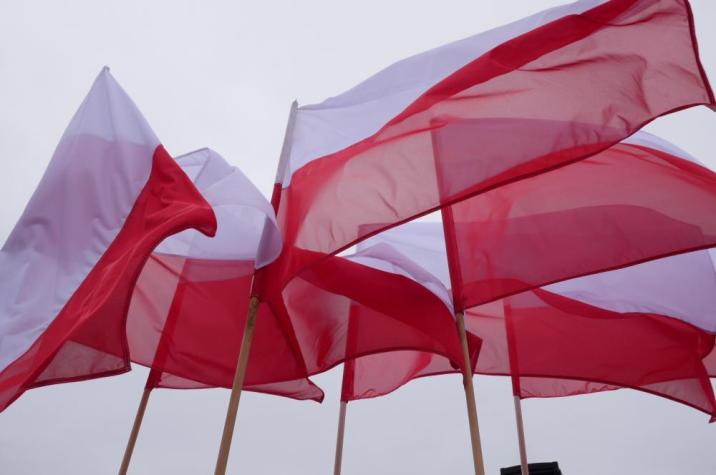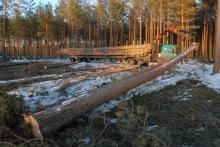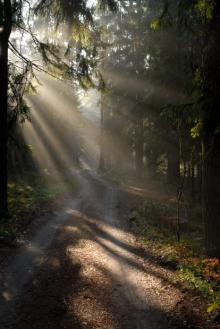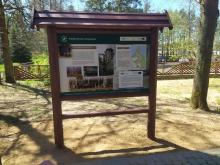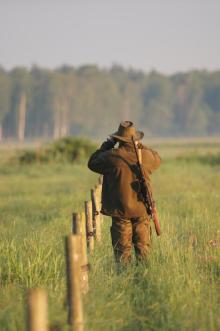 Asset Publisher
Asset Publisher
Polish forests
Poland is in the European lead, while concerning the area of all forests. They cover about 29,2 % of the country territory, and grow within the area of 9,1 million hectares. The overwhelming majority of the forests is state owned, of which almost 7,6 million hectares are managed by the State Forests National Forest Holding..
The number of Polish forest is still growing. The forestation rate of the country has increased from 21 % in 1945 to 29,2 % at the moment. Between 1995 and 2008, the forest area increased by 310 thousand ha. The basis for afforestation works is the "National Programme for Increasing the Forest Cover" (KPZL), assuming an increase of the forestation rate up to 30 % by 2020 and up to 33 % by 2050. Polish forests abound in flora, fauna and fungi. 65 % of the total number of animal species live there.
The forests grow in our country on poor soils, mainly because of the development of the agriculture in previous years. It influences the distribution of the types of the forest sites in Poland. Over 55 % of the forest areas is covered with coniferous forests. In other areas, there are forest sites, mainly the mixed ones. Their small part constitute alder and riparian forests – not more than 3 %.
In the years 1945 – 2011 the area of natural deciduous tree stands within the area of the State Forests National Forest Holding increased from 13 to 28,2 %.
Within the lowlands and uplands the most often occurring tee species is pine. It covers 64,3 % of the forest area of the State Forests National Forest Holding and 57,7 % of private and commune forests. In the mountains the predominant species is European spruce ( in the west) and European spruce with beech (in the east). Domination of pine is the result of carrying on sustainable forest management in the past. Once, the monocultures (crops or cultivations of one species) were the answer to the great demand of industry for wood. Such forests appeared to be quite fragile to climatic factors. They also were often the prey of pests' expansion.
In Polish forests, the share of other tree species, especially deciduous trees have been systematically increasing. The foresters have stepped aside from monocultures – that is why, they try to fit specific species of the forest stand to the natural stand, that would be proper for the given area. Thanks to that, in the years 1945 – 2011, the area of the deciduous tree stands within the lands of the State Forests National Forest Holding increased from 13 to 28,2 %. There occur more and more frequently the following tree species: oaks, ashes, maples, sycamore maples, elms, but also birches, beeches, alders, poplars, hornbeams, aspens, tilias and willows.
Our forests are the most often represented by the forest stands aged 40 to 80 years. The average age of the forest equals 60 years. More and more trees are of big size at the age over 80 years. Since the end of the Second World War, the forests' area has increased up to almost 1,85 million hectares.
Raport o stanie lasów w Polsce 2012
 Asset Publisher
Asset Publisher
BIAŁO-CZERWONĄ TRAKTUJ Z SZACUNKIEM
BIAŁO-CZERWONĄ TRAKTUJ Z SZACUNKIEM
Flaga jest symbolem państwowości oraz przynależności narodowej. Poprzez czczenie flagi swojego kraju angażujemy się w budowanie odrębności narodowej.
Dzień Flagi Państwowej Rzeczypospolitej Polskiej obchodzony jest 2 maja, a jego główną rolą jest popularyzowanie wiedzy o polskiej tożsamości i symbolach narodowych. Dzień Flagi został wprowadzony na mocy ustawy z 20 lutego 2004 roku. Jest to dzień między dwoma państwowymi świętami: 1 maja (Międzynarodowym Świętem Pracy) i 3 maja (Świętem Konstytucji 3 Maja). 2 maja jest równocześnie obchodzony Dzień Polonii i Polaków za Granicą.
Źródłem dzisiejszych barw jest herb Królestwa Polskiego i herb Wielkiego Księstwa Litewskiego. Biel pochodzi od bieli orła, będącego godłem Polski oraz bieli Pogoni - rycerza galopującego na koniu, będącego godłem Litwy. Oba te godła znajdują się na czerwonych tłach tarcz herbowych. Z tego właśnie względu na polskiej fladze biel znalazła się u góry, ponieważ w heraldyce RP ważniejszy jest kolor godła. W 1919 r. kolory biały i czerwony uznano oficjalnie za polskie barwy narodowe.
2 maja w Dniu Flagi RP organizowane są akcje i manifestacje patriotyczne. W szkołach odbywają się występy artystyczne, flagi umieszczane są na domach, blokach oraz instytucjach państwowych. Od kilku lat powszechnym zjawiskiem jest również noszenie w tym dniu kokardy narodowej.
- Flaga eksponowana publicznie musi być czysta mieć czytelne barwy. Nie może być pomięta lub postrzępiona.
- Flagą nie oddaje się honorów żadnej osobie, nie pochyla się jej przed żadną inną flagą lub znakiem.
- Flagą nie można przykryć pomnika lub tablicy pamiątkowej przed ich odsłonięciem.
- Podczas uroczystości flagi na odpowiednich podstawach lub stojakach należy umieścić po lewej stronie pomnika (dla patrzącego na pomnik), w kolejności zgodnej z hierarchią.
- Flaga nigdy nie może dotknąć podłogi, ziemi, bruku lub wody.
- Flaga nie może służyć jako nakrycie stołu lub opakowanie jakiegoś przedmiotu.
Flaga RP ma proporcje 5:8. Nie wolno na niej umieszczać żadnych napisów i rysunków.
Barwy narodowe różnią się od flagi państwowej RP tym, że nie mają określonych proporcji. Mogą być dowolnej długości i szerokości trzeba jednak pamiętać, że szerokość obu pasów musi być równa. Przykładem są kokardy narodowe.


 fot. Paweł Fabijański
fot. Paweł Fabijański
 fot. Paweł Fabijański
fot. Paweł Fabijański
 fot. Paweł Fabijański
fot. Paweł Fabijański

